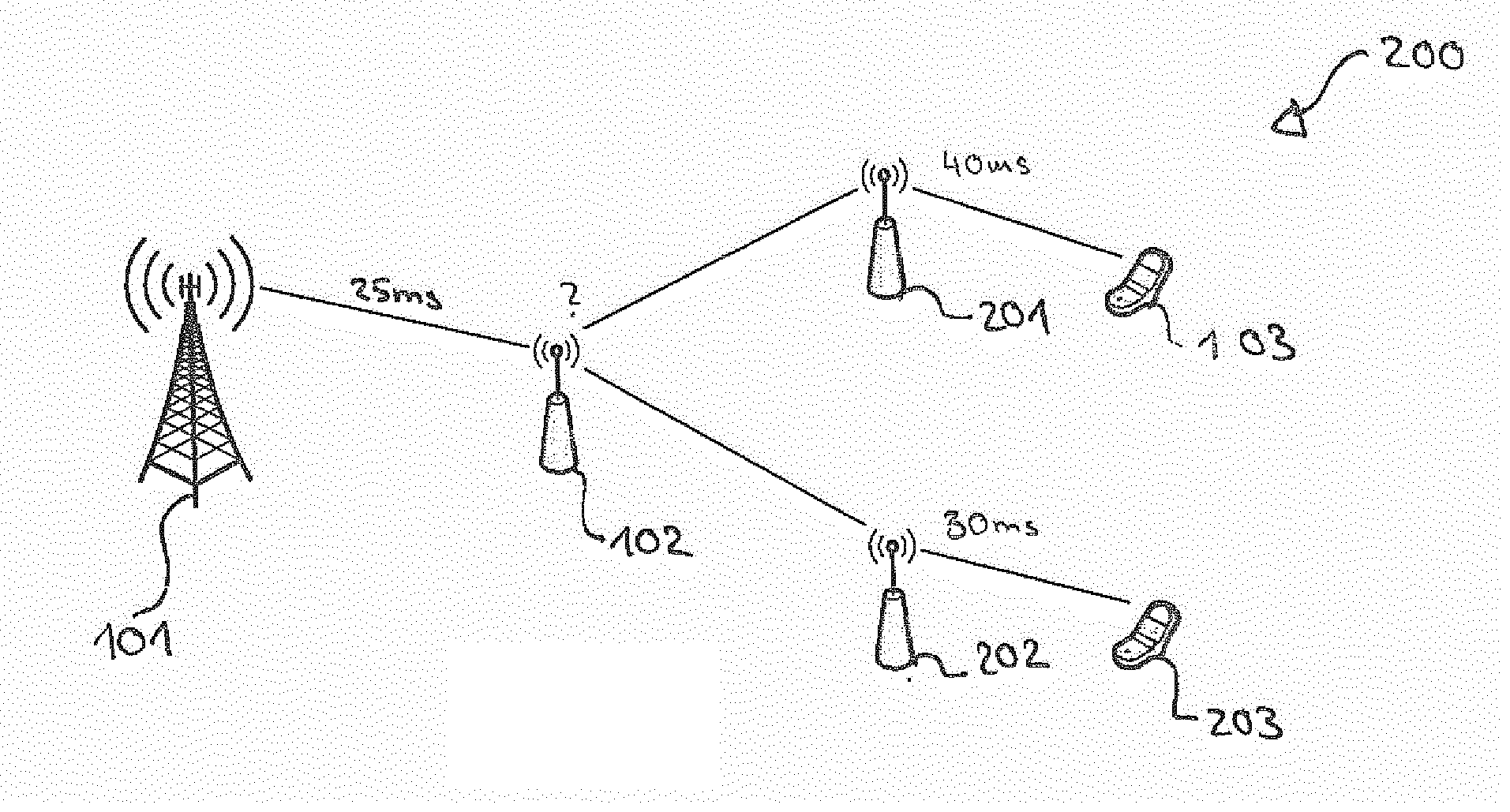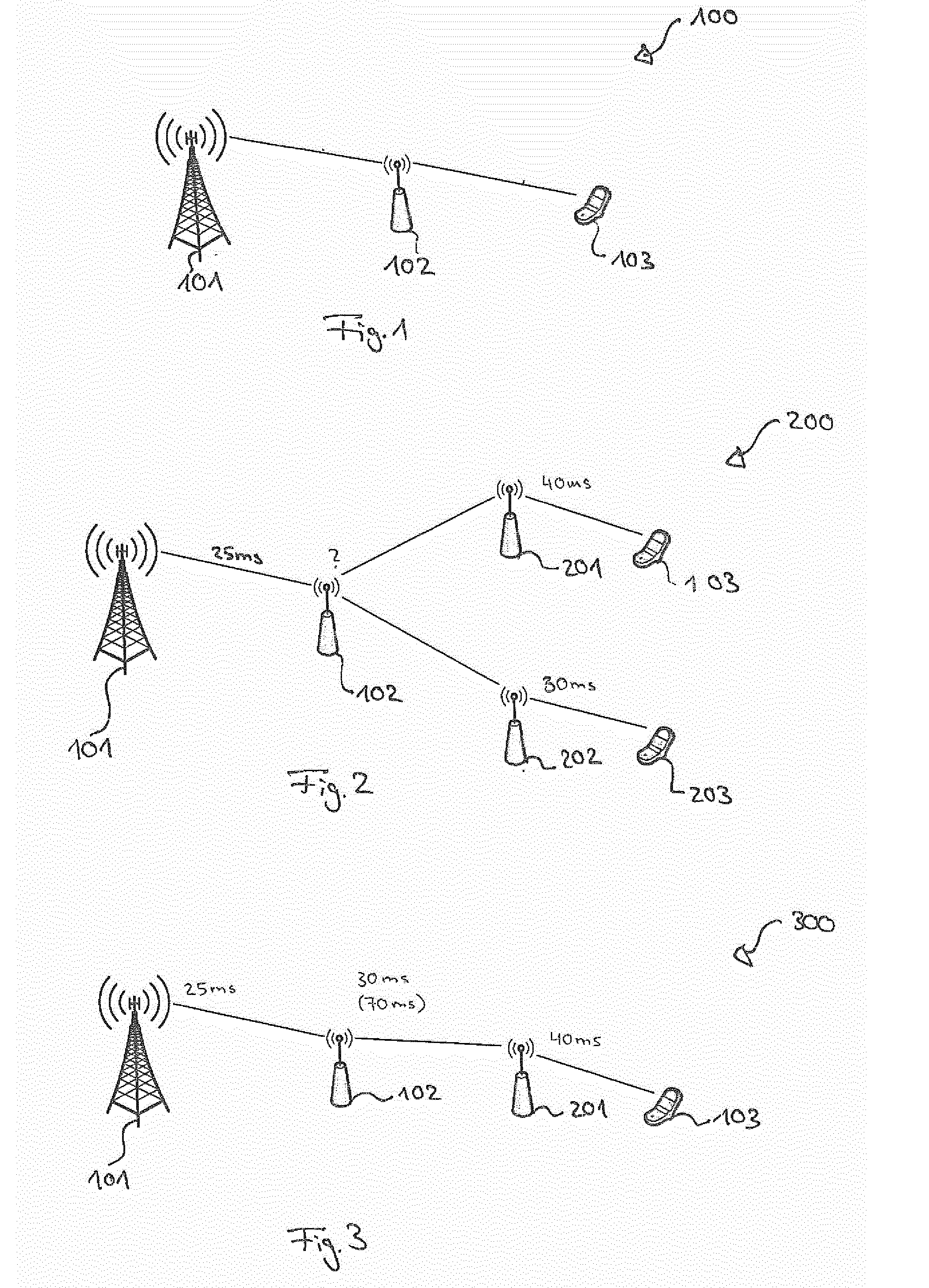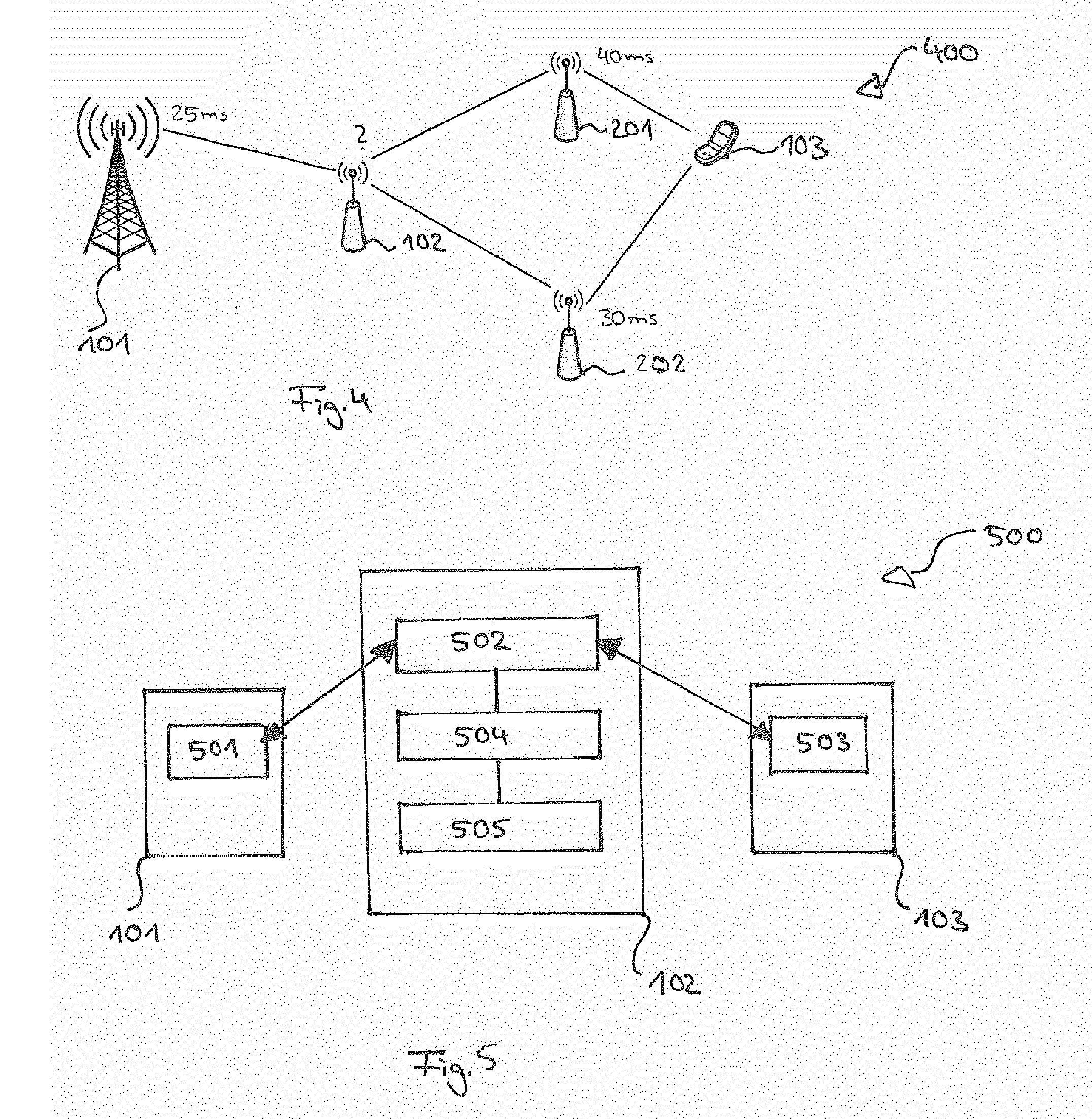Method for Controlling a Multi-Hop Transmission
- Summary
- Abstract
- Description
- Claims
- Application Information
AI Technical Summary
Benefits of technology
Problems solved by technology
Method used
Image
Examples
first embodiment
[0071]In the following, two specific embodiments will be described. In a first embodiment, each packet designed for a multi-hop transmission may be marked with a timestamp showing generation time of the packet. The timestamp could be added for example in the GTP-U header of the packet but of course it could be added to other headers. The timestamp can be used to estimate the delay already experienced on previous relaying hops. Each node, upon reception of a packet, can check the timestamp in the packet header, compare it with the current time and estimate the already experienced delay.
[0072]An alternative solution could be to include the delay already cumulated for example in the MAC header (but of course other headers can be used). I.e. after the scheduling decision is taken, it will summed the cumulated delay in the current node to the delay already cumulated in the previous nodes and included for example in the MAC header.
[0073]Additionally, it should be known at each stage of th...
second embodiment
[0081]In the second embodiment, all nodes (DeNB, nested-RNs and end-RNs) collect packet delay measurements from all subordinate and superior nodes and sum them to estimate delay for each subordinating connection (future delay) and for the preceding connection (previous delay).
[0082]FIG. 2 shows an example of such a network configuration. The delay between the DeNB 101 and the nested RN 102 may be for example 25 ms. The nested RN estimates this delay as previous delay. It further estimates the delay to RN 201 for example as 40 ms and the delay to RN 202 as 30 ms. Thus, a maximum delay for packets to user equipment 103 may be PDB-20-25-40 [ms] and to user equipment 203 PDB-20-25-30 [ms].
[0083]Depending on the nested-RN functionalities, it could be also possible that the nested-RN can calculate the sum of its own delay measurement and the delay of subordinate RNs, and forward it as the total delay in the part of the network topology supported by the nested-RN. For example as shown in F...
PUM
 Login to View More
Login to View More Abstract
Description
Claims
Application Information
 Login to View More
Login to View More - R&D
- Intellectual Property
- Life Sciences
- Materials
- Tech Scout
- Unparalleled Data Quality
- Higher Quality Content
- 60% Fewer Hallucinations
Browse by: Latest US Patents, China's latest patents, Technical Efficacy Thesaurus, Application Domain, Technology Topic, Popular Technical Reports.
© 2025 PatSnap. All rights reserved.Legal|Privacy policy|Modern Slavery Act Transparency Statement|Sitemap|About US| Contact US: help@patsnap.com



